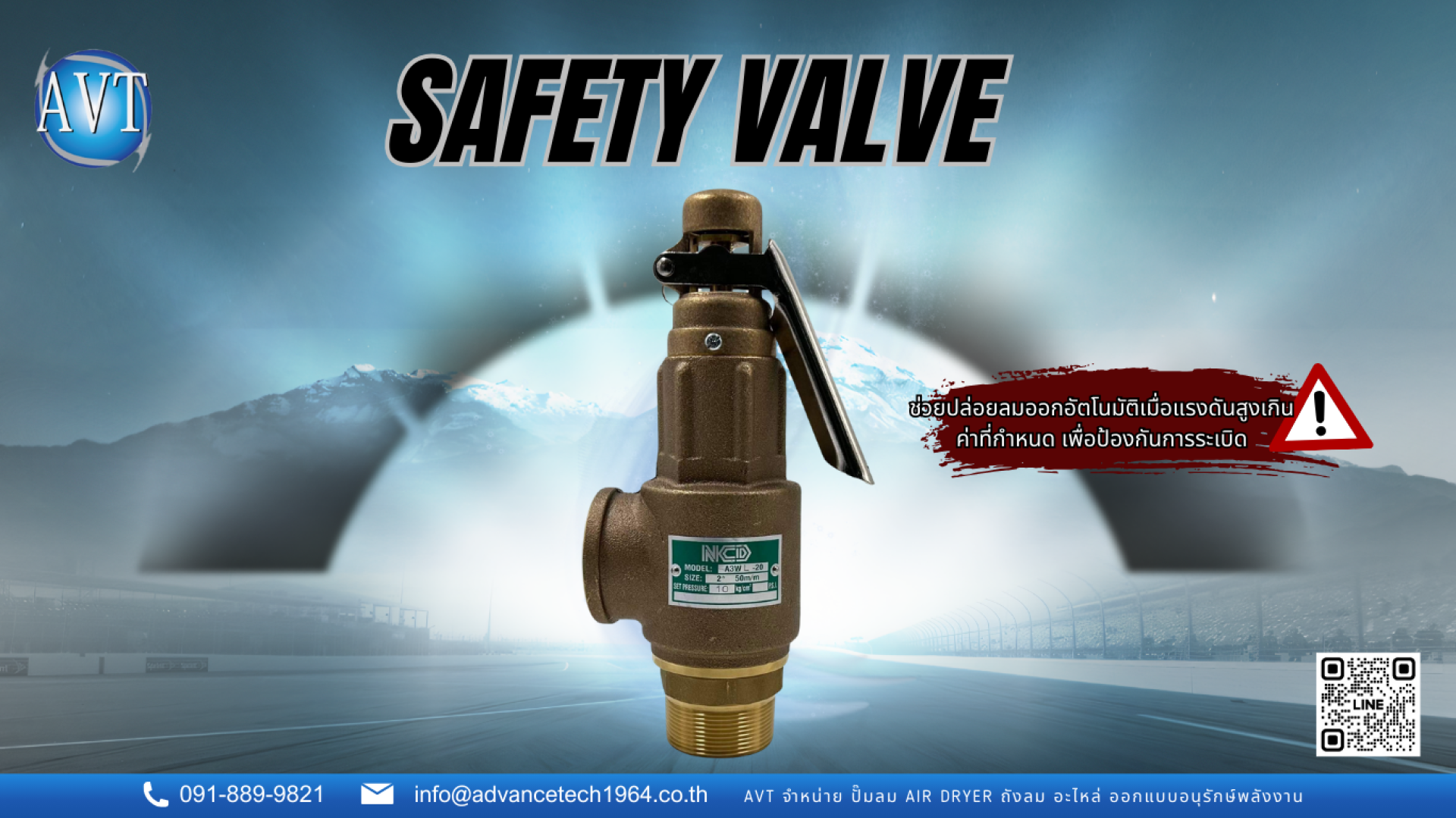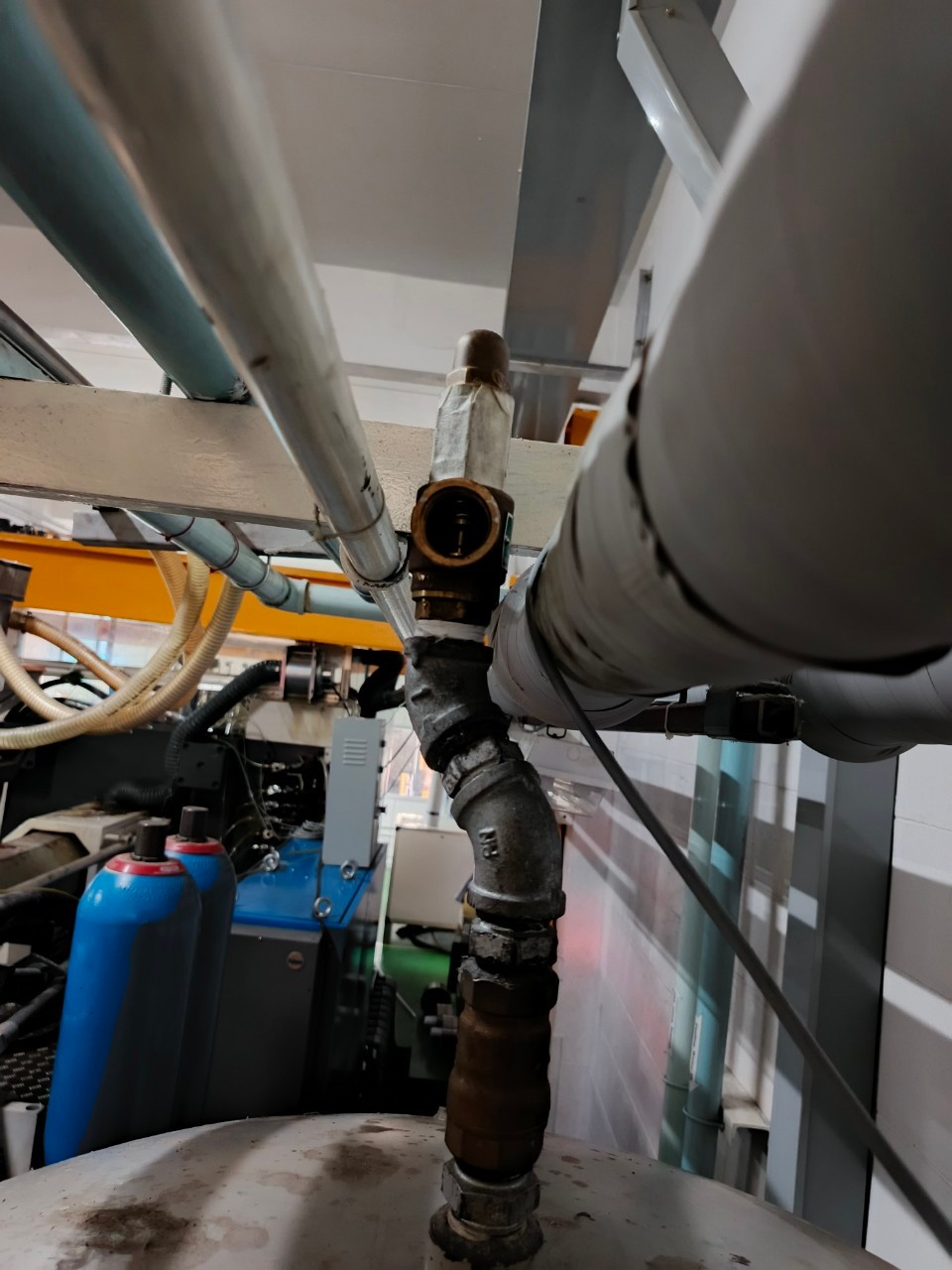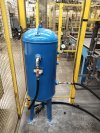What is a Safety Valve? How to Use and Set the Pressure for a Safety Valve

What is a Safety Valve?
A safety valve is a type of pressure relief device designed to open and discharge fluid or gas from a system when the internal pressure exceeds a pre-set limit. By doing so, the valve prevents the system from reaching unsafe pressure levels that could lead to equipment failure, explosions, or other catastrophic events. Safety valves play a crucial role in protecting equipment, personnel, and the environment.
Example Application:
Installed on an air tank to blow off pressure when the pressure reaches a set level.

How does a Safety Valve work?
A safety valve operates based on the principle of force balance. Internal pressure exerts a force on the valve's disc or piston, opposing the force of a spring or other balancing mechanism. When the force from the pressure exceeds the force of the spring, the valve opens, allowing excess fluid or gas to escape until the pressure drops to a safe level.
Types of Safety Valves:
- Spring-loaded Safety Valve: The most common type of safety valve, featuring a spring that keeps the valve closed until the set pressure is reached.
- Pilot-operated Safety Valve: This type uses a pilot valve to control the opening and closing of the main valve, making it suitable for high-pressure and higher flow rate applications.
- Deadweight Safety Valve: In this type, the force exerted by a weight on a lever determines the pressure at which the valve opens.
How to Use a Safety Valve:
The steps for using a safety valve are as follows:
- Identify Critical Pressure Points : Determine the critical pressure points within the system where a safety valve is needed to prevent over-pressurization.
- Select the Appropriate Valve: Choose the correct type and size of safety valve for the application, considering factors such as flow rate, pressure, and the medium being handled.
- Installation and Placement: Install the safety valve vertically with the outlet directed away from personnel and sensitive equipment. Ensure there are no obstructions or blockages that could impede the valve's operation.
- Scheduled Maintenance: Regularly inspect and test the safety valve to ensure it is in proper working condition. Follow the manufacturer's guidelines for maintenance schedules.
Pressure Setting:
- Understand System Requirements : To determine the needs of the air system, understand its operating parameters, including pressure, temperature, and maximum flow rate.
- Determine the Set Pressure: Set the pressure relief point of the safety valve slightly above the maximum operating pressure that the system can handle to prevent nuisance tripping. Use a Pressure Gauge to read the pressure for setting.
- Avoid Tampering with Set Pressure: Safety valves are often factory-set and calibrated. Avoid interfering with the set pressure unless it is done by qualified personnel.
- Maintain Records: Keep detailed records of safety valve settings, inspections, and maintenance to track performance and regulatory compliance.
- Consult Professionals: If you are unsure about setting the safety valve, consult professionals or engineers experienced in pressure relief systems to ensure correct configuration.
Safety valves are a crucial part of any system where pressure control is essential. Proper maintenance and setting of safety valves ensure the safety of equipment, personnel, and the environment, while also maintaining operational efficiency. Always adhere to industry standards and guidelines when working with safety valves to prevent potential hazards and optimize performance.


